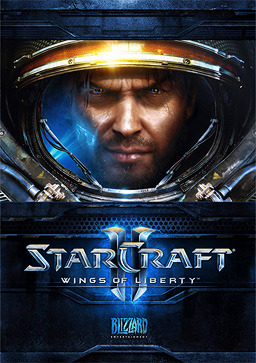Great game with a unique problem
This has been a long time coming for a lot of people. The sequel to the RTS that founded a gameplay framework that was the base to use for future successful titles has come back in a big way. It's predecessor is well known to be the game that generated an entire national league, and the sequel intends to make sure that players have the tools to push the e-sports scene further than before. StarCraft 2 promises a compelling narrative, deeper levels of combat with unique missions, and a new competitive arena where people can compete against others in an all new way. Does Starcraft 2 succeed in furthering the RTS genre like its predecessor did, or is it merely a dated formula in 3D, cashing in to an existing audience, who waited over a decade for this?
Story, Campaign Structure and Mechanics
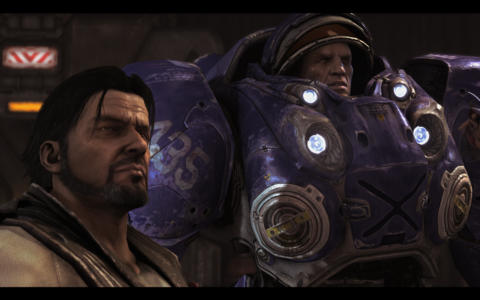
I will not talk further about the story obviously, as that would spoil things rather heavily on you, the reader. However I will say that the story itself overall was not worth the long wait. The story is rather simple, and made overly complicated in an attempt to feel like an amazing story, with excellently executed acting scenes and stellar cinematics. The solution used to solve a problem in the game is also something that isn't really compelling, but just made to add a few more missions in. Most of the missions aren't really connected to the story, and the ones that are connected aren't as interesting as they should have been. My most favourite missions that have a point have to be the missions involving Zeratul's memory logs of what he's been up to during the 4-year story gap, but again I will not spoil it, as it gets rather heavy there.
Throughout the campaign, you perform missions and complete them, in order to earn money and collect zerg or protoss artifacts and samples to further power your existing army. You use your hard-earned cash to purchase upgrades and new abilities for your units and structures, and research allows you to select one of two upgrades each level, and only one. It gives the user some choice as of how to customize their army, and what they would rather prioritise.
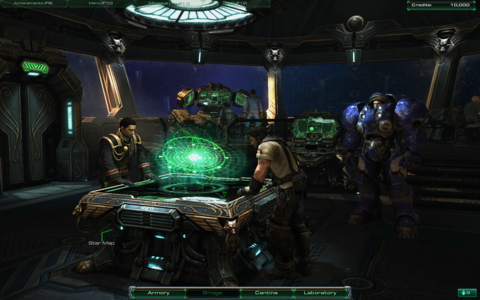
The missions in the campaign are pretty diverse, ranging from basic missions where you escort things, or beat the opposing force, to...doing that but with a twist. One mission that was really terrible (to set as an example), is the one mission where it cycles through day and night. During the day, you have to destroy infested buildings, and at night, you defend your base from re-spawning waves of infested civilians. The problem? Destroying 144 buildings is not fun. Neither is just sitting there at night, killing off slow-moving zombies. They try to mix it up with infested Terrans and a unique infested enemy, but it doesn't help with this mission overall. There are many instances of this, and though not as severe as the example, result in a negative impact to a player's overall experience if they were expecting something more dynamic and clever for a mission.
However that is not to say that there weren't some fun missions, but the fun missions again were ones with twists, like a mission where you need to constantly move your structures away from deadly sunlight, that heats up the planet so much as to cause fire. If you ever watched the Chronicles of Riddick, you will know what I mean.
The difficulties between the missions usually do not involve any more real skill than "make more units than them" most of the time, and I at least played up to hard to know that. The single-player campaig just forces you to focus on a lot of macro-management other than set you up for a situation requiring any real out-of-the-box thinking. Note that I refer to the skill of what people in multiplayer games come up with to counter certain army formations. The difficulty never really challenges you to find the right army composition to combat them with a mix of micro and macro. For those who care about them, achievements were placed in the missions to encourage you to take on tough situations in a specific way, or complete missions under a certain time limit, but nothing of in-game value is earned from doing this. So unless you like your points, it is not a very good motivator to play too differently from just building really fast, and tossing your army ball in the direction of the enemy. For the most part, that is all you need to do.
For what it's worth, people can enjoy this game if they turn their mind off the fact that most of the missions really are dragging in terms of story, and that the greatest story moments are not playable by any means. This is another game where they try to convince players that the reward is seeing action scenes. To this I say I would rather be rewarded with actually interacting with these scenes, not just watch them. I did not pay to play a campaign only to watch through a good chunk of the game. I also did not pay to go through destroying over 100 structures. It is a campaign that is worth one play-through and I will only revisit it after a long break with multi-player and other, better story experiences.
The Core of the Game Itself
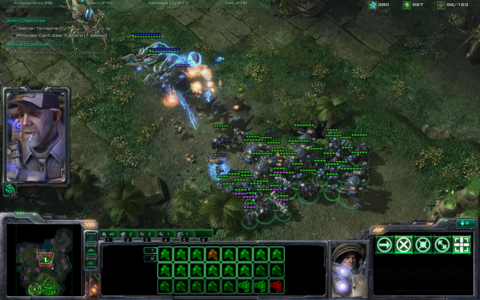
To be honest, there is barely anything new about any of the game mechanics that are worth mentioning. I could talk about how Protoss can warp in instantaneously when you upgrade your gateways to the alternate form, warp gates, or how Terrans can now make reactors to train two units at the same time to make unit production faster, but overall they are small changes. They are not updates that change the fundamentals of how the game works at its core, and it is the core gameplay itself that unfortunately Blizzard cannot change even if they wanted to, due to it being a popular E-sport nowadays. Of course, they fixed some problems that existed in the first game, like being able to select more than 12 units per selection, allowing you to bind your entire army to one key if you wanted (thus allowing you to segment your army more properly with other binds), and that the unit pathing is a whole lot less annoying than the first, and don't result in wasting your time micro-managing units, telling them to stop running around in an empty space for some odd reason.
The gameplay being fundamentally unchanged is both a good and a bad thing. On the upside, we all know what to expect, and we like it. It isn't a problem at all as the game itself is easy to pick up compared to more involving RTS games, yet hard to master because of the variables involved in a game of classic melee skirmish. The downside is that you cannot expect a game to innovate if they do not take risks with the gameplay, and strive to further the genre like other games have done after it, such as World in Conflict's first-person camera, allowing players to move around the field and view the battlefield in more immersive ways, or with Dawn of War 1 finding a solution to discourage turtling players, and keep the gameplay active with continuous combat over requisition points and critical points. Again, this isn't something bad from the first game that set the RTS standard. However the sequel sets no real standards, except for one thing.
The Multi-Player Leagues
This has got to be my most favourite thing about this game. This is the real reason why StarCraft 2 got made. The Multiplayer mode is not just a mode, but an entire league system that encourages players to get competitive, by placing them in a league via 5 placement matches, and determining which league you should play in. From there, it is a never-ending contest between players in their allocated division, to rise to the top of the table, and aim to get into as high a league as possible.
For 1v1 up to 4v4, there are leagues which you place yourself in. After being placed in a league, you play some games simply to score as high as you can against other players in the same league. If you are a casual player and worry that you will not score enough points, do not worry; there are bonus points that accumulate over time (and cap once you reach a bonus cap), and when you win a match, a portion of the bonus points are added along with the usual points you get for winning.
The points you get for a win or loss are determined by measuring the rank difference between you and the opposing player(s), whether you won or lost, and other variables kept secret from us by Blizzard. Also, at any time, you could be placed against a player from a higher or lower league, to test your current ability. If you win against players of a higher league often, it can indicate the league system to consider moving you up a league, or if you lose often to players of a lower league, it may indicate that you need to be dropped down a league. This is done to ensure you are always playing players of a similar skill level as yourself.
If there are any low-points to be had in this mode, is that there is no real in-game area to let you talk to anyone you might have faced before, and seems to be a real hassle. Also, the restrictions, limitations and popularity problem with custom maps are causing real problems with map-makers, meaning that unless you bother to go to the bottom of the list for the good stuff, you will only see the most popular maps which only got popular as they are on the top of the list, and that people generally are too lazy to go down the list much. Also, apparently there is still an issue where random teams are pitted against an arranged team, and that ruins anyone’s options of playing in a purely random team league. They may be addressed in the future (such as the return of chat rooms), but as of now they have not been solved appropriately.
Overall, this is the most robust multiplayer system that I have ever seen in a game. This is perfect for a game that was practically made for competitive action, and will be a great foundation to accommodate the multiplayer community and the e-sports scene.
Visuals
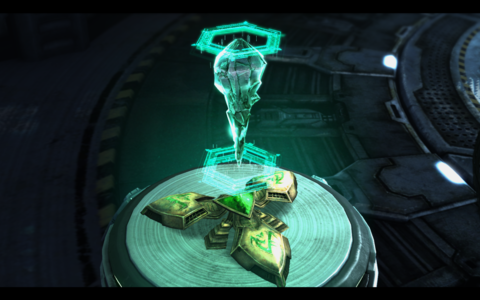
On the one hand, the art-style and art assets are of top-notch quality, with a lot of facial detail on the characters, as well as nice detail on just about everything. If there are flat textures, they are masked behind some stellar details found everywhere else. The looks of all of the units are also nice during missions, and overall most of the game somehow looks like StarCraft 1, but in 3D, which is great. It is nice to see a developer keep to an aesthetic established over a decade ago, and still make it look great.
The models though, range from great to sub-par, but there are very few cases of the latter. One case is seeing bullet shells with clearly polygonal holes. Many developers have figured out how to fake roundness to a better detail than that, for example, and the solutions didn’t really involve any real rendering power to achieve. It would be unfair for me to discredit the game on that, when the character and unit models are really well done considering that they have to cater to players that don't have stellar machines. If they attempted to just stick to the graphical quality of World of WarCraft, then I would have a little more of a valid dislike for it, as this is not an MMO which needs to work on as weak a computer as possible for maximum consumer adoption. Blizzard knew this, and instead kept the quality bar set reasonably high, making their universe look better than it has ever been. They also allowed for high scalability, so as not to alienate players with weaker PC’s, which is also a plus.
Overall, nothing in this game will cause any real visual distaste from any player with reasonable expectations. Sure they should have implemented some other basic features common in all PC games like Anti-Aliasing, but they did a good job to do their game justice visually nonetheless.
Conclusion
StarCraft 2 overall is a package of an amazing multi-player league system and a massive community, and a campaign that doesn't really satisfy the massive wait for me and probably a lot of other players that actually pay attention to the story as a whole. The game is also not innovative in any meaningful way, and does not do anything to improve RTS storytelling. At least this rehash of the first game still plays well enough to be enjoyable rather than stale. Even though, to me, it does not warrant a perfect score for not having an even level of quality throughout the package, I bought the collector’s edition, made it to the gold league, and will enjoy the multi-player leagues for years to come.
